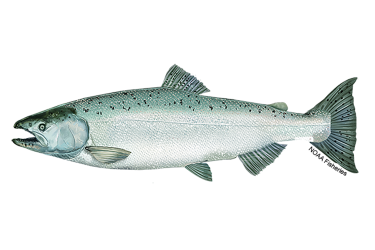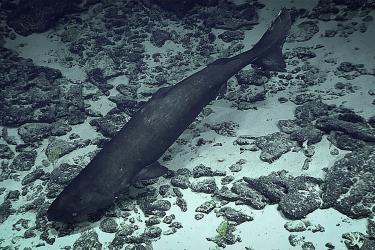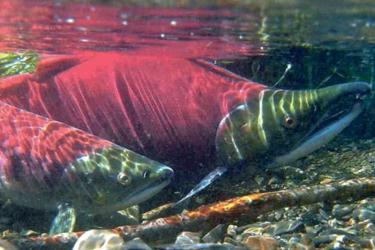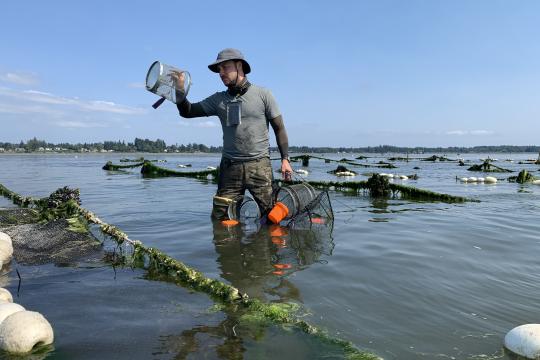My primary responsibility is performing work as a stock assessment scientist at NOAA Fisheries’ Alaska Fisheries Science Center in Seattle, Washington. This involves modeling the abundance of commercially important fish stocks and making recommendations for sustainable fishing quotas. I also conduct genetic research in support of managing our fisheries in Alaska.
I grew up in Washington State—both the east and west side—and attended public school. When I was in high school (in Shoreline, Washington) some classmates had the opportunity to visit the Alaska Fisheries Science Center. They even received T-shirts during their field trip. I didn't go, but I talked to my friends who attended and it was so interesting that I reached out to the director of the NOAA Fisheries Alaska Fisheries Science Center’s Resource Ecology and Fisheries Management Division. He hired me over the phone to be a summer biological assistant when I was a junior in high school. This was a very exciting opportunity for me. I worked with his group (where I still work today) and assisted with projects such as measuring juvenile hake, weighing fish ovaries, and even going out to sea.
I earned a bachelor’s degree in biology and a pre-med degree at Swarthmore College in Pennsylvania. I thought I would like to be a doctor, so I worked as a laboratory technician in cancer research labs in Boston and in Seattle to gain relevant experience. When I realized I didn’t want to go the medical route, I remembered how I really enjoyed working in fisheries. I took a job at the University of Washington in the School of Aquatic and Fishery Sciences. I eventually got a Master’s degree in that lab studying the origin of sockeye salmon in Lake Washington using genetics. That led me to a job at the Alaska Fisheries Science Center, where I worked as a laboratory technician and had the opportunity to set up a new genetics lab. During my time in the genetics lab, I realized there was a need to bridge the gap between genetics and fishery management. Genetics can be an extremely useful tool to answer questions in support of fishery management. I returned to graduate school for my Ph.D. to tackle this challenge.
I always mentor students when given a chance. I have taught genetics and given hands-on laboratory experience to high schoolers, undergraduates, and graduate students. I even had the opportunity to work with a first grader who later reported to her class that “fish have genes,” and drew a picture of a fish wearing jeans. I also tend a food bank plot at my local community garden. The vegetables I grow get donated to the local food bank.
My college cross country running coach told me that to achieve great things, you need to work on them every day. He was referring to running, but I feel that is a very important life lesson for achieving big things. I’ve continued to work under that same philosophy on many difficult projects throughout my life, and it has extended to my profession.
I am lucky to have been influenced by many women at the Alaska Fisheries Science Center who are great role models—in their strength, persistence, and professionalism.
There are so many other women in history whom I admire. Several who come to mind are Katherine Johnson, a mathematician who worked for NASA for more than 30 years. She helped NASA put an astronaut into orbit around Earth and put a human on the moon. I also think of Wangari Maathai, who organized women to plant millions of trees in Kenya, and Gertrude Ederle, who swam the English Channel in 1926, beating the mens’ record by two hours.
To me, being a career civil servant has meant the opportunity to grow as a scientist to tackle questions relevant to marine resources. I strive to answer questions that are practical from the standpoint of helping improve fisheries management. I also answer scientific questions related to how species evolve and adapt under climate change. I appreciate the opportunities and time I have had to conduct meaningful and impactful research. My hope is to continue to pursue these research questions. Working in the same career over several decades has given me the opportunity to gain perspectives that include scientific observation in the field and in management, the collection of long-term datasets and forming long-time relationships with other researchers.
My advice to youth interested in a federal government career is to look for volunteer opportunities. If you are interested in a job, and you have the opportunity, offer to volunteer, even if it is only part time. This will give you on the job experience, allow you to meet professionals in the field, and may lead to a job in the future. Take opportunities that come your way; I like to think that opportunities come to people for a reason and are worth pursuing. Create a vision of the contribution you would like to make to the world. Talk to experts and don’t be afraid to ask them questions. Also, take breaks—your body and brain work together, and you need to take care of them both. Become a good writer—this is essential to communicate your ideas. Be honest and kind.






